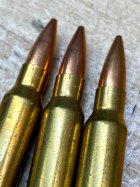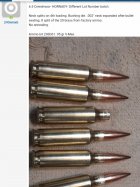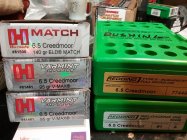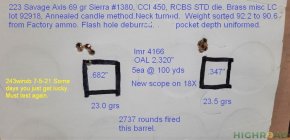 223 Split necks.
223 Split necks.Has anyone experienced 223 split necks from older ammo.
I have about 300pcs of loaded 223 ammo - that I was just chronying and discovered almost all the necks are now split.
Ammo was loaded using purchased "processed and primmed" Lake City 223 brass. Bullet was/is 69gr HPBT.
I used this brass for years when I shot High Power rifle back in the day and never had an issue.
This ammo has been stored in an ammo can for about 20years. It did spend 3.5 years in a not climate controlled garage.
I plan on pulling the ammo apart.
Just curious if anyone else has had similar issues.
Thanks.













